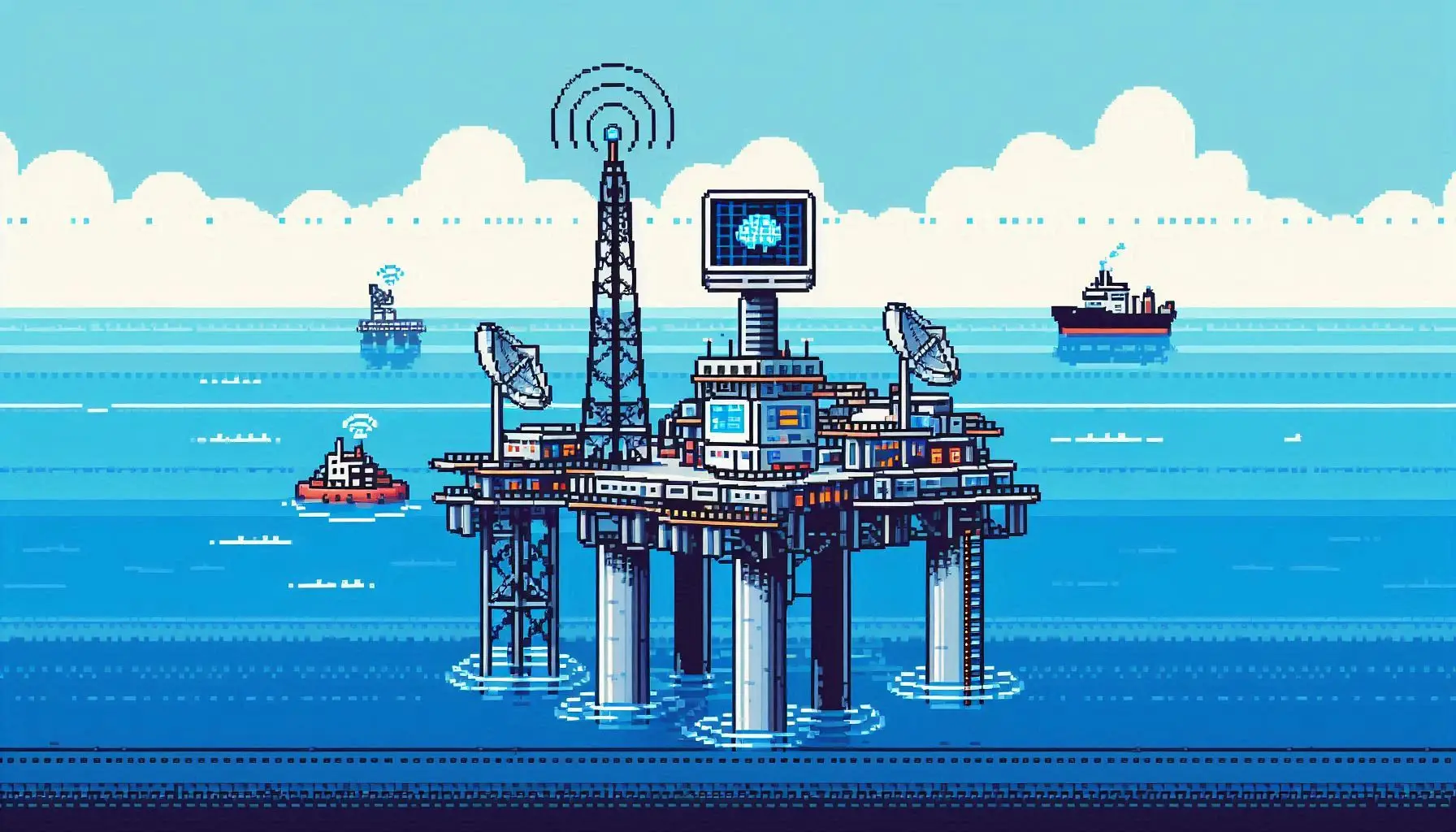Your AI just went dark. No internet, no cloud access, no real-time updates. It’s just you, your edge device, and a need for instant, intelligent decision-making.
Whether you’re on an oil rig, in a war zone, or responding to a disaster, connectivity is a luxury you can’t always depend on.
So how do you keep AI running when the network is down?
Welcome to the world of offline AI, where Generative AI (GenAI) and Retrieval-Augmented Generation (RAG) aren’t just cloud-based conveniences but mission-critical tools that must work anywhere, anytime.
Want to learn more about RAG architecture for GenAI development? Don’t miss this post!
The solution lies in edge computing, self-contained AI systems, and hyper-optimized models that can function without an internet connection. Let’s dive into the strategies that make AI deployment possible even in the most disconnected environments:
- AI Doesn’t Have to Rely on the Cloud – By leveraging edge computing, AI models can process data locally, eliminating the need for continuous internet access.
- Optimized Models Make a Difference – Techniques like quantization, pruning, and using smaller language models (SLMs) allow AI to run efficiently on lower-power devices.
- Self-Contained AI Systems Enable Autonomy – Autonomous 5G cores, local LLMs, and infrastructure tools like Terraform help deploy AI that functions independently.
- Critical Use Cases Span Multiple Industries – From healthcare to industrial IoT and disaster response, offline AI can revolutionize decision-making where connectivity is unreliable.
Why is Connectivity a Problem for AI?
Traditional AI models, especially large language models (LLMs), are designed to run on cloud infrastructure. They need high processing power, extensive memory, and real-time access to external data. That’s fine if you have a stable internet connection, but what happens when you don’t?
The Challenges of Running AI Without Cloud Access:
- Computational Limitations – AI models are massive, and most edge devices don’t have the horsepower to run them efficiently.
- Data Security Concerns – Sending sensitive data to the cloud can be a risk, especially in healthcare or government use cases.
- Latency Issues – Cloud processing introduces delays that aren’t ideal for real-time decision-making.
Edge Computing: The Key to AI in Disconnected Environments
Instead of depending on cloud-based AI, edge computing allows AI models to process data locally on devices like IoT hardware, mobile phones, or industrial machines.
How Edge AI Works:
- On-Device Processing – AI models are deployed directly on edge devices, reducing dependency on the cloud.
- Localized Fine-Tuning – Instead of pulling data from external sources, AI can learn from locally stored, domain-specific datasets.
- Real-Time Decision-Making – By eliminating data transmission delays, edge AI makes fast, reliable decisions even without an internet connection.
Model Optimization for Low-Power Devices
AI’s appetite for computational resources is a big hurdle in low-connectivity settings. To make AI work on the edge, we need to optimize models for efficiency.
Techniques to Optimize AI for Low-Power Environments:
- Quantization – Reducing the precision of numerical representations in AI models to decrease memory and processing needs.
- Pruning – Cutting out unnecessary parameters from a neural network to make it run faster with less resource demand.
- Using Smaller Language Models (SLMs) – Instead of deploying massive LLMs, businesses can use domain-specific, lightweight models that fit within edge computing constraints.
Use Cases: Where Low-Connectivity AI Shines
Healthcare in Remote Areas
Imagine a rural doctor needing AI-powered diagnostics but lacking reliable internet. Medical LLMs like Med-PaLM can run locally on edge devices, analyzing patient records without transmitting sensitive data externally.
Industrial IoT & Predictive Maintenance
Factories operating in remote locations can’t afford to rely on cloud-based monitoring. AI-powered predictive maintenance running on industrial IoT devices can analyze sensor data locally, preventing downtime before it happens.
Legal Research in Disconnected Settings
Lawyers working in areas with unreliable connectivity can use offline RAG-powered legal assistants to query proprietary legal databases stored on secure local servers.
Disaster Response & Emergency Management
When natural disasters knock out communications, AI-powered analytics running on edge devices can provide real-time insights, aiding decision-making when it matters most.
Overcoming the Challenges of Edge AI
Deploying AI without cloud connectivity is powerful, but it’s not without setup hurdles.
Key Challenges & How to Solve Them:
- Hardware Limitations – Use lightweight AI models that don’t require extensive computational resources.
- Connectivity Disruptions – Implement self-contained AI systems with pre-trained models that don’t need continuous updates.
- Security & Privacy – Ensure that sensitive data stays on-device with end-to-end encryption.
Final Thoughts: The Future of AI in Disconnected Environments
AI doesn’t have to be limited to the cloud. With edge computing, model optimization, and autonomous systems, AI is becoming increasingly capable of functioning in low or no-connectivity scenarios. As technology continues to advance, we’ll see more AI-powered applications making a difference where they’re needed most—regardless of connectivity constraints.
Want to Build AI for Disconnected Environments?
If you’re looking to integrate AI into remote, low-connectivity, or offline settings, let’s talk. Whether it’s optimizing models, deploying self-contained AI systems, or setting up edge computing infrastructure, we can help you navigate the process.
Reach out today and let’s make your AI work anywhere.

